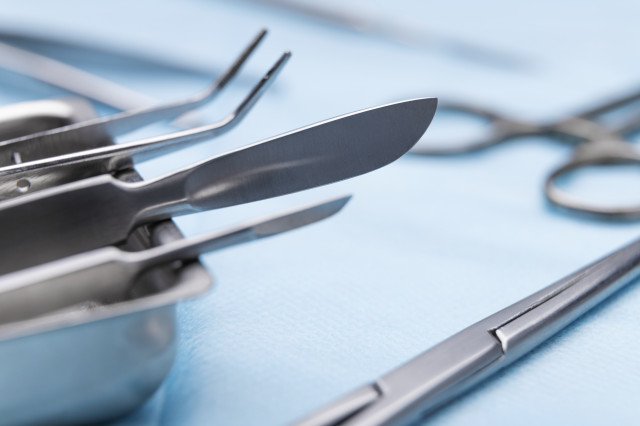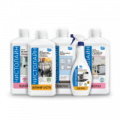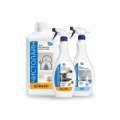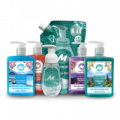Processing of medical devices: methods and stages of processing, how to choose the means?

Content
The handling of medical instruments is an important task aimed at maintaining a high level of safety for patients and caregivers. It aims to neutralize and/or completely destroy microorganisms that may be potentially dangerous in terms of their ability to cause infectious diseases. Proper handling of medical devices minimizes the risks of the spread of infections and ensures the maintenance of a healthy atmosphere in the institution.
Disinfection Methods
There are several main methods of disinfection of medical devices. Among them:
- Mechanical. Includes manual and hardware washing of surfaces, vacuuming, ventilation of the room, as well as ventilation.
- Physical. The list of these methods includes boiling, autoclaving, processing in a dry-heat oven (dry heat).
- Chemical. This is treatment with disinfectants or immersion in a disinfectant solution.
- Bacteriological. This method is not as popular as all the others and involves the use of highly specific bacteriophages.
Stages of processing medical devices
It is important to remember that the processing of medical instruments usually involves several basic steps, including:
- disinfection is carried out immediately after the use of instruments by immersing them in a solution of a special disinfectant;
- pre-sterilization cleaning – can be manual or machine (carried out in special machines that work according to a standard scheme);
- sterilization is aimed at the complete destruction of any microorganisms on the surface of medical instruments.
Each stage of tool processing has its own procedure.
Means for chemical treatment of medical devices: varieties
Chemical disinfectants for medical instruments are represented by a wide range of commodity items, which can be divided into different groups, including:
- Halogen-containing. They are based on iodine, bromine or chlorine.
- Oxygen-containing. As the name implies, they contain oxygen, which is released from other substances by a chemical reaction when using disinfectants. The main component can be hydrogen peroxide, various peroxide compounds, as well as peracids.
- Surfactants. They have not only disinfectant, but also detergent qualities. They allow both pre-sterilization and disinfection.
- Guanide-containing. Quite complex organic compounds that affect various pathogenic microorganisms.
- Aldehyde-containing They have sporicidal and bactericidal properties, destroy fungi and viruses, and have a negative effect on microorganisms.
- Alcohols. They are recommended for antiseptic treatment of various surfaces and medical equipment, including hard-to-reach places.
- HR (quaternary ammonium compounds) Effective disinfectants that are characterized by a low level of toxicity and do not lead to corrosion of metal products.
Regardless of the chosen product, the user must strictly follow the algorithm for disinfecting medical devices. Usually, manufacturers of disinfectants give detailed recommendations for their use in the instructions.
How to Choose Medical Instrument Treatment Products?
Disinfection of medical instruments should be carried out exclusively with the use of products that are designed for such treatment. Their choice depends on the specifics of the instrument, its material and purpose. Disinfection of medical instruments can be carried out using the following means:
- Vernedor. A unique disinfectant, the effect of which depends on the degree of dilution. Depending on the concentration of the working solution, Vernedor can be used for disinfection, for complex disinfection and pre-sterilization treatment, as well as for high-level disinfection and even sterilization. It is suitable for the treatment of both instruments and medical equipment.
- Leaven. Recommended for pre-sterilization cleaning. Suitable for gentle and efficient handling of instruments, including flexible endoscopes. It is easy to use and copes even with stubborn dirt.
- Mediocide. An alcohol-based product that is ideal for quick disinfection. It can be used to treat various medical devices that require prompt disinfection. Suitable for use in hard-to-reach places. It dries very quickly.
- Septodor Forte. It is suitable for disinfection as well as for pre-sterilization cleaning. It helps to disinfect medical devices made of various materials, as well as disinfect surfaces.
In order for any disinfectant for medical devices to give the desired effect, it is extremely important to use it correctly - strictly adhere to the manufacturer's recommendations regarding the preparation of the working solution and the holding time.






